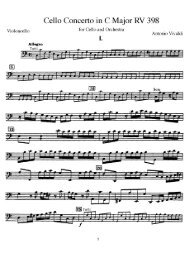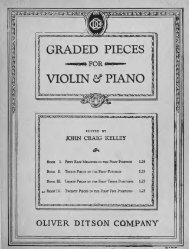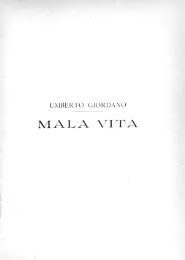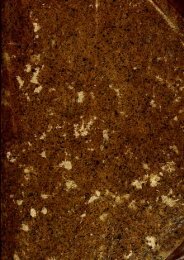Concerti Ecclesiastici
Concerti Ecclesiastici
Concerti Ecclesiastici
You also want an ePaper? Increase the reach of your titles
YUMPU automatically turns print PDFs into web optimized ePapers that Google loves.
x<br />
were the first ones to call themselves inventors of the new recitar cantando 25 . In those years<br />
continuo practice was at an early stage 26 and in the following two centuries became one of<br />
the most important parts of baroque music.<br />
From this context arose the collection that Giovanni Paolo Cima (ca. 1570 –<br />
1630) 27 — organist at the Milanese church of S. Celso28 from 1595 to his dead and from<br />
1614 also choir conductor — published in 161029, the same year in which Claudio Monteverdi<br />
printed his famous Vespro della Beata Vergine 30 .<br />
The Cima’s printing31 is composed of about forty motets for 1, 2, 3, 4 and 5 voices<br />
and one piece (Assumpta est Maria) for 8 voices divided into two choirs, the first one characterised<br />
by a melismatic writing while the second one uses a much simpler style, so maybe<br />
the first chorus was composed by solos and the other by a schola cantorum.<br />
The collection contains also a mass, two complete magnificat settings and six instrumental<br />
pieces that are the most studied and performed part of Cima’s production and<br />
that conclude the printing (as in Viadana’s <strong>Concerti</strong>, the last piece is a Canzon Francese in Risposta<br />
for violin, cornett and two sackbuts).<br />
25 Cf. Giulio Caccini, L’Euridice, Firenze 1600, preface; Iacopo Peri, Le musiche sopra l’Euridice, Firenze 1601,<br />
preface.<br />
26 The first texts about continuo are printed in these years: a part for the preface of Viadana, see A. Agazzari,<br />
Del sonare sopra ’l basso con tutti li stromenti e dell’uso loro nel conserto, Siena 1607; F. Bianciardi, Breve regola per imparar’a<br />
sonare sopra il basso con ogni sorte d’istrumento, Siena 1607.<br />
27 Cf. Renato e Rossella Frigerio, Giovanni Paolo Cima organista nella Madonna di S. Celso in Milano: documenti inediti<br />
dell’Archivio diocesano di Milano, in «Il Flauto Dolce» XVI (1987), pp. 32 – 37; J. Roche, R. Tibaldi, s. v. Cima,<br />
Giovanni Paolo in The New Grove’s Dictionary of Music and Musicians, second editino, London 2001, V p. 848;<br />
G. Morche, s. v. Cima, Giovanni Paolo, in Die Musik in Geschichte und Gegenwart, zweite Ausgabe, Personenteil,<br />
IV coll. 1118 – 1122; R. Tibaldi, I mottetti a quattro voci (Milano 1599) di Giovanni Paolo Cima e lo stile “osservato”<br />
nella Milano di fine ’500: alcune osservazioni, in «Polifonie» II, 1 (2002), pp. 7 – 69.<br />
Only after the article by Frigerio (see), who found his testament and the payment lists of the church of S.<br />
Maria in S. Celso, it has been possible to state that Cima died between 25 June and 30 September 1630.<br />
28 About the importance of S. Celso as musical centre cf. G. Riccucci, L’attività della cappella musicale di S. Maria<br />
presso S. Celso e le condizione dei musici a Milano tra il XVI e il XVII secolo, in Intorno a Monteverdi, a cura di M.<br />
Caraci Vela e R. Tibaldi, Lucca 1999, pp. 289 – 312 e L. Ghielmi, Contributo per una storia degli organi del Santuario<br />
di S. Maria dei Miracoli presso S. Celso, in «L’Organo» XXII (1984), pp. 3 -22.<br />
29 Modern editions: n. 1 in A. Adrio, Die Anfänge des geistlichen Konzerts, Berlin 1935; n. 43 in F. Commer, Musica<br />
Sacra, XIII, Regensburg 1882; the three sonatas n. 47 - 49 are edited by K. Grebe (ed. Sikorski); nn. 47 and<br />
48 are also published by London Pro Musica; a complete editino has been edited by R. Hofstötter and I.<br />
Rainer, Wien 1998 (Wiener Edition Alter Musik, 1). Fac-simile edited by Piero Mioli published by S.P.E.S,<br />
Firenze 1986.<br />
30 Claudio Monteverdi, Sanctissimae Virgini missa senis vocibus ad ecclesiarum choros ac vespere pluribus decantenda cum<br />
nonnullis sacris concentibus as sacella sive principum cubucula accomodata, Venezia 1610.<br />
31 Among the music by G. P. Cima, there are also compositions by Giovanni Andrea Cima (c. 1580 – after<br />
1627), brother of Giovanni Paolo and organist at the church of S. Maria della Rosa in Milan around 1617<br />
and than maestro di cappella in Bergamo. Apart for his music printed here, he published two collections of motets<br />
(<strong>Concerti</strong> [a 2-4 voci], Milano 1614; Il secondo libro delli concerti [sempre a 2-4 voci], Venezia 1627) and three<br />
canzoni, a mass (4 voices) and seven other motets in contemporary anthologies.<br />
Cf. H. Smither, The Latin Dramatic Dialogue and the Nascent Oratorio, in «Journal of American Musicological Socierty»<br />
(1967), p. 412; J. Roche, s. v. Cima, Andrea in The New Grove Dictionary of Music and Musicians, London<br />
1980., IV p. 397; G. Moroni, s. v. Cima, Andrea, in Dizionario della Musica e dei Musicisti, Torino 1985, II p. 246.


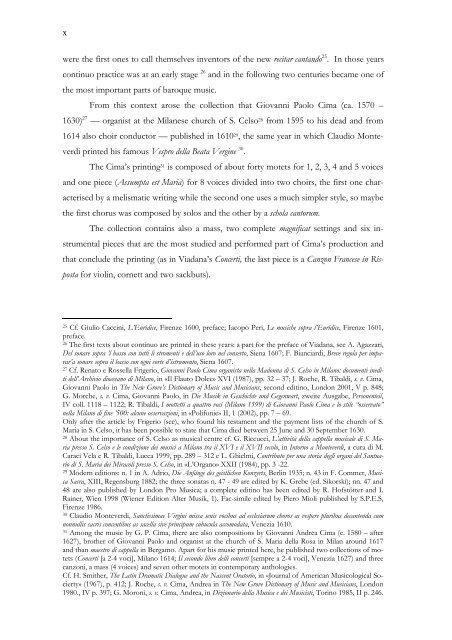
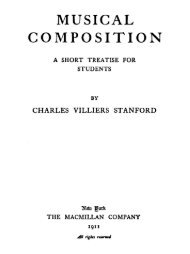
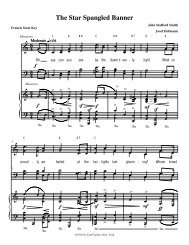
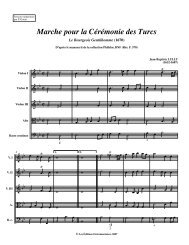
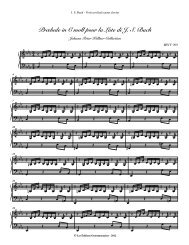
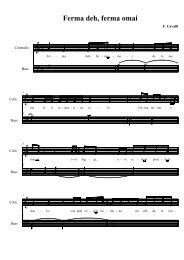
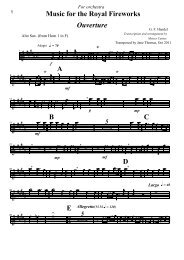
![Finale 2008a - [PENTACORDIOS Y ESCALAS]](https://img.yumpu.com/31639986/1/184x260/finale-2008a-pentacordios-y-escalas.jpg?quality=85)
